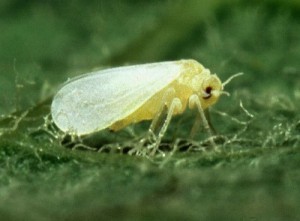

Florida has a new pest and it’s not a good thing. He’s called the whitefly. He is a little bug with white wings and somewhat resembles a small moth. Unfortunately, this pest not only causes damage to your backyard, it has also spread diseases. It is believed that whitefly infestations have caused millions of dollars in damage to plants and crops over the past few years.
Where did they come from?
It is generally thought that the whitefly originated in either Central America or the Caribbean islands, although exactly where is not known. The first detection of the spiraling whitefly in Florida was noticed in 2009 on a gumbo limbo tree. The first detection of the ficus whitefly in Florida was in 2007. Since that time, they have travelled north and are propagating at an alarming rate.
Damage and Diseases:
Unfortunately, whiteflies don’t just feed on leaves; they can actually damage the entire plant. As they begin to feast, the whitefly uses his sharp pincer mouth to suck the nutrients right out of the leaves. In addition, they inject toxins from their saliva into the plant. If the whitefly is carrying plant diseases, he can spread the disease to all the plants that he feasts on.
The damage is not just limited to trees or crops. The residue they leave behind can cause damage to houses, cars, pools and more.
How to tell if you have them:
Most homeowners complain that the leaves on their trees are turning yellow before they drop or even becoming droopy and wilting when previously the plant looked extremely healthy. They also leave behind a sticky, gummy mess on your trees, shrubs, driveways and cars and if not cleaned up, this sticky ooze may attract sooty mold.
You can also tell by looking at the underside of leaves in your backyard. You may either see the eggs that the female whitefly lays or you may see the whitefly itself as it’s feasting. One type of whitefly actually moves rather slowly and you may see a good handful of them on the back of your leaves. In addition, sometimes the whitefly lays their eggs in a circular pattern and is very easy to spot.
In addition, many homeowners say they notice the infestation almost overnight. They go to sleep one night, wake up the next morning and find their driveway and car covered with the sticky, gooey whitefly excretions.
What to do:
If you suspect a whitefly infestation, get with a professional right away. Early detection and treatment is essential to whitefly management. There are several different types of whiteflies in Florida and your lawn care professional will be able to help you identify which type of whitefly is making his home in your back yard.
The whitefly is very good at building a resistance to pesticides, so your lawn care professional may have to make several passes with several different solutions before you notice that the infestation is gone. In addition, he will be targeting the solution to the underside of plants as that’s where the eggs are laid and the bugs feast.
